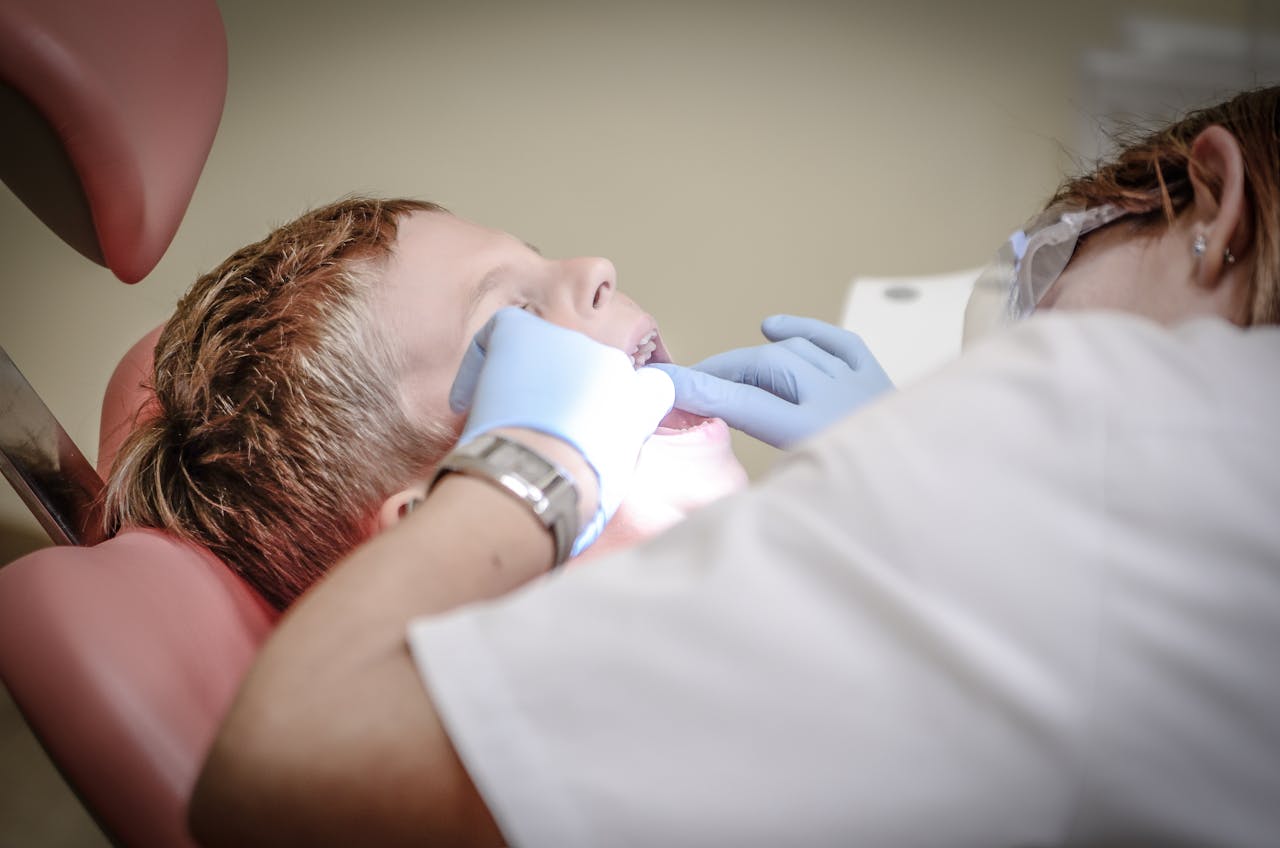Cavity Prevention Tips Every Parent Should Know

Cavities are the most common chronic disease of childhood—but they’re also highly preventable. With a few daily habits, smart food choices, and regular checkups, you can drastically cut your child’s risk of tooth decay. This guide breaks down exactly what to do by age, plus when to call a trusted pediatric dentist in Quantico, VA for personalized care.
How Cavities Start (and How to Stop Them)
Plaque—the sticky film on teeth—houses bacteria that feed on sugars and turn them into acid. That acid softens (demineralizes) enamel. Given enough time and repeated “acid attacks,” a hole forms: a cavity. Three levers control risk:
- Sugar frequency (how often teeth are exposed, more than how much in one sitting)
- Oral hygiene (plaque removal and fluoride exposure)
- Tooth surfaces (pits and grooves in molars are most vulnerable)
If you reduce frequent sugar hits, clean well, and protect vulnerable surfaces, you win.
Age-by-Age Prevention Guide
Infants (0–12 months)
- Clean the gums with a soft, damp cloth after feedings—this lowers bacterial load before teeth erupt.
- Bedtime bottles: Avoid milk or juice in bed. If needed, offer water.
- First visit: Plan your child’s first dental visit by their first birthday or within six months of the first tooth.
Toddlers (1–3 years)
- Toothpaste: Use a smear/rice-sized amount of fluoride toothpaste twice daily.
- Brush technique: Lay your child’s head in your lap; use gentle circles along the gumline.
- Sippy cups: Keep them for water only; switch to open cups by ~2 to reduce frequent sugar exposure.
Preschool to Early Elementary (3–6 years)
- Toothpaste: Increase to a pea-sized amount of fluoride toothpaste twice daily.
- Flossing: Start when teeth touch—often the back molars first. Floss picks can help.
- Snacks: Prioritize whole foods (cheese, nuts, yogurt, fruit, veggies). Save sticky carbs (gummies, crackers) for mealtimes.
School-Age and Pre-Teens (7–12 years)
- Sealants: Ask about sealants for first and second permanent molars (usually erupt ~6–12 years).
- Sports drinks & sodas: Use rarely; they’re acidic and sugary. Encourage water most of the time.
- Orthodontics: If braces are on the horizon, introduce interdental brushes and water flossers early.
Teens (13–18 years)
- Ownership: Transition to independent brushing/flossing, but spot-check.
- Diet reality: Teens snack more. Emphasize frequency control—fewer grazing episodes.
- Xylitol gum: Sugar-free/xylitol gum after meals (for older kids who can chew safely) can boost saliva and reduce risk.
The Daily Cavity-Prevention Routine (2 Minutes, Twice a Day)
- Brush: 2 minutes, morning and night, focusing on the gumline.
- Fluoride toothpaste: Rice-sized (<3 years) or pea-sized (3+). Spit; no need to rinse fully—let fluoride stay on teeth.
- Floss: Once daily where teeth touch.
- Water: Encourage water between meals. If your tap is fluoridated, that’s a bonus.
- Night routine: Never put a child to bed with milk or juice on teeth. End the day with brushing.
Pro tip: Electric brushes (kid-sized, soft bristles) with built-in timers help hit the full 2 minutes. Replace brush heads every ~3 months or after illness.
Fluoride, Sealants, and Professional Prevention
- Fluoride varnish: Quick, painless, strengthens enamel—often recommended at checkups, especially for higher-risk kids.
- Dental sealants: Clear/white coatings on chewing surfaces of molars block food and germs from deep grooves.
- Risk-based checkups: Most kids do well with visits every 6 months; high-risk children may benefit from 3–4 month intervals.
- Cavity risk assessments: Your dentist can review diet, saliva flow, hygiene habits, and medical history (e.g., mouth-drying meds) to tailor prevention.
Smarter Snacking: What Actually Matters
- Frequency beats quantity: Five small sugar hits across a day is worse than one dessert with dinner.
- Sticky carbs linger: Crackers, chips, granola bars, fruit snacks stick in grooves; follow with water and brush when you can.
- Better options: Fresh fruit, cheese, yogurt (unsweetened or low-sugar), nuts, eggs, whole-grain toast with nut butter.
- Label check: Watch for hidden sugars in yogurts, sauces, and drinks—“–ose” endings (sucrose, fructose) and syrups are clues.
Special Situations That Raise Cavity Risk
- Mouth breathing or allergies: Dry mouth reduces protective saliva; add extra water, consider a humidifier, and be diligent with hygiene.
- Orthodontic appliances: Food traps increase; upgrade to floss threaders/water flossers and add a mid-day rinse when possible.
- Frequent meds: Liquid medications may contain sugar; brush or at least rinse with water afterward.
- Enamel defects or white-spot lesions: Early chalky white patches can often be remineralized with fluoride and improved hygiene—catch them early.
When to Call a Dentist (Don’t Wait on These)
- White or brown spots that don’t brush off
- Food trapping in the same area and new sensitivity to cold/sweets
- Persistent bad breath despite good brushing and flossing
- Toothache or night pain
Families near the base and surrounding neighborhoods can count on a friendly, prevention-first pediatric dentist in Quantico, VA for quick checks, fluoride, and sealants before small issues turn big.
FAQs: Fast Answers for Busy Parents
Q1: Are cavities genetic? There’s no “cavity gene,” but enamel quality, saliva flow, and oral bacteria profiles can run in families. Habits still drive the outcome—great routines overcome higher risk.
Q2: Fluoride worries me. Is it safe for kids? Used as directed, fluoride is safe and highly effective at preventing decay. Keep toothpaste amounts age-appropriate and supervise brushing to avoid swallowing large amounts.
Q3: Do we really need to treat cavities in baby teeth? Yes. Untreated decay can cause pain, infection, difficulty eating/sleeping, and can affect the spacing and health of permanent teeth.
Q4: What’s the right first dental visit age? By the first birthday or within six months of the first tooth—whichever comes first.
Q5: Is mouthwash necessary for kids? Not usually. Brushing with fluoride toothpaste and daily flossing matter most. For older children at higher risk, a fluoride rinse may be recommended—ask your dentist.
Q6: My child hates brushing. Any tricks?
- Let them pick the brush and toothpaste flavor.
- Use a 2-minute song or timer app.
- Brush with them and model technique.
- Sticker charts and small non-food rewards work wonders.
Simple Checklist You Can Print
☐ Brush 2×/day for 2 minutes ☐ Floss daily where teeth touch ☐ Fluoride toothpaste (age-correct amount) ☐ Water between meals (avoid constant snacking) ☐ Ask about fluoride varnish & sealants ☐ Schedule regular checkups (risk-based frequency)
The Bottom Line
Cavity prevention is about consistency, not perfection. If you focus on fewer sugar “hits,” solid daily hygiene with fluoride, and timely checkups, your child’s smile will stay healthier—and happier. When you need guidance tailored to your child’s unique risk factors, partner with a trusted pediatric dentist in Quantico, VA.




